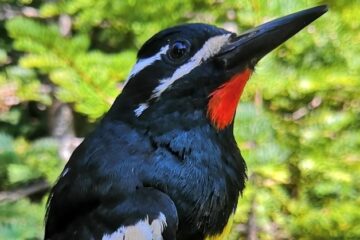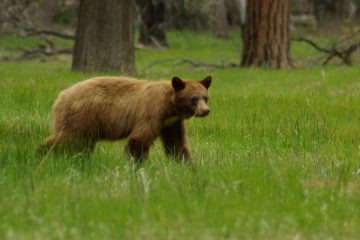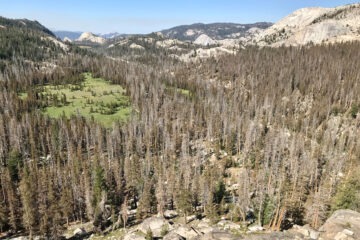A earlier version of this story appeared in our May 2020 magazine.
On August 4, 2016, a few dozen students sporting neon vests and gardening gloves gathered in Cook’s Meadow. Rangers explained the goal for the “Youth in Yosemite” stewardship day: improving habitat for pollinators, such as bees and butterflies.
Pollinators are an essential component of any ecosystem. They fuel plant reproduction and provide sustenance for other animals. Nurturing native plants in the Valley, the students learned, could help struggling pollinators — especially monarch butterflies.
Equipped with shovels and seedlings, the students dug in, carefully planting milkweed and yarrow, wrestling out armfuls of invasive mullein and bull thistle, and creating a pollinator-friendly haven, one plant at a time.
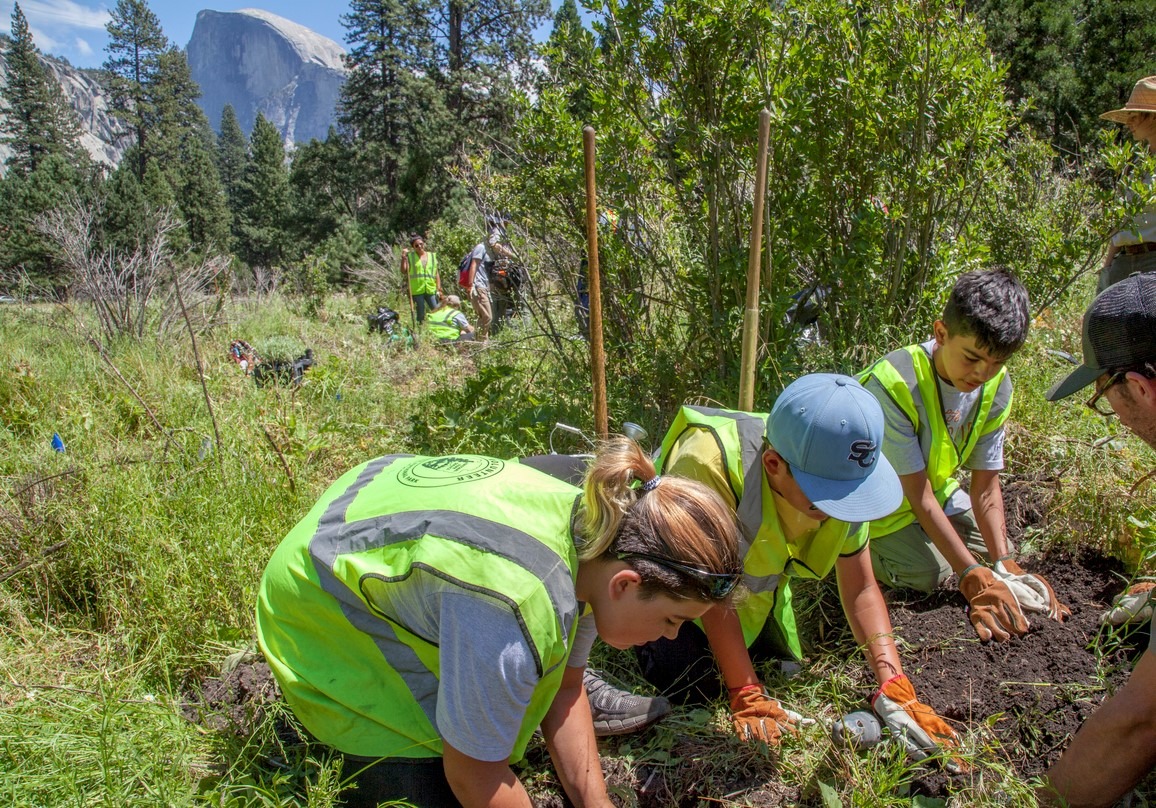
In 2016, a group of students, including these Parks in Focus® middle schoolers worked with park staff to plant native flowers and remove invasive plants in Yosemite Valley. (Parks in Focus is a Udall Foundation program supported by Conservancy donors.) Photo: Yosemite Conservancy/Keith Walklet.
On that summer day in 2016, the most recent count of monarchs west of the Rockies had put the population at about 293,000 butterflies; by early 2020, it was below 30,000 — a decline of more than 99% from the 1980s, according to the Xerces Society for Invertebrate Conservation. Scientists point to habitat loss, spurred by drought, development and other factors, as a key driver in that decline.
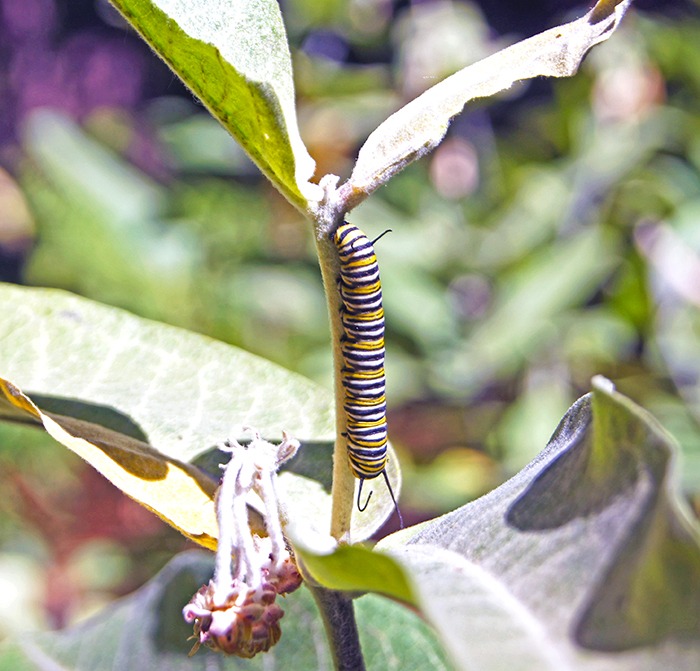
Milkweed is the only “host plant” for monarch butterflies, whose striped caterpillars rely on the plants for food. Photo: NPS.
Western monarchs winter along the Pacific coastline, breed in inland meadows, and rely on a single plant, milkweed, to support their young. As a stopping point on the monarchs’ annual migration, Yosemite Valley’s protected meadows could be a refuge for the imperiled butterflies.
Not long ago, some of the park’s prime pollinator areas had become “fly-over territory,” devoid of shelter and nutrition, park botanist David Campbell explains. Invasive plants, such as cheatgrass and Himalayan blackberry, had displaced milkweed and other native vegetation.
Since 2016, Conservancy donors have supported an effort to revive pollinator habitat in the Valley, including in Ahwahnee and Cook’s meadows, near the Rangers’ Club, and at Cascade Falls. Some areas targeted for restoration have been impacted by roads, utilities and foot traffic, or bear the lingering decades-old effects of draining meadows to support grazing, agriculture or housing. Those areas likely wouldn’t rebound into healthy habitat on their own, and need a little extra help through active revegetation.
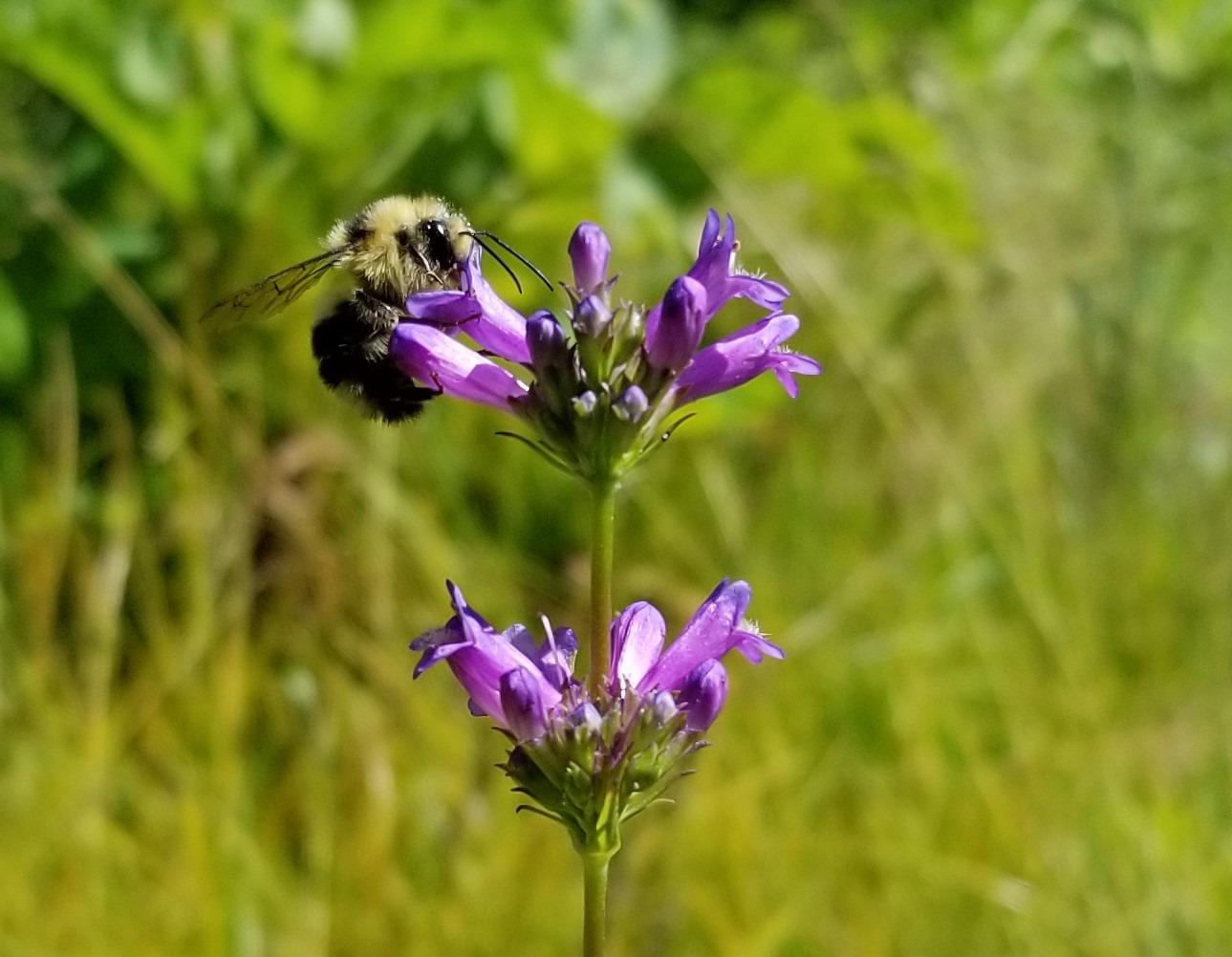
Restoration crews and volunteers have sown native flowers, including penstemon, to improve pollinator habitat in Yosemite Valley. Photo: NPS, July 2019.
There are many stressors affecting monarch butterflies and other pollinators, Campbell says, and there’s no quick fix.
“Successful restoration is iterative, taking many years to be successful, and requiring many individuals,” Campbell says. “We can never accomplish what the geological forces that make, break and reform the earth accomplish, what glaciers and oceans grinding against bedrock leave behind.”
But small actions, careful planting and seed collection, are a solid start. Those seedlings the Parks in Focus students planted in 2016 will host generations of monarchs, and will produce seeds to sow more milkweed.
“We can make sure that, when a monarch makes it to Yosemite, it finds a safe haven,” Campbell says. “We can restore their habitat, pulling one weed at a time and planting one native flower at a time. For the monarch searching for a milkweed to lay its egg, or for a bumblebee foraging for pollen, finding that one plant that wouldn’t be there without our help matters.”
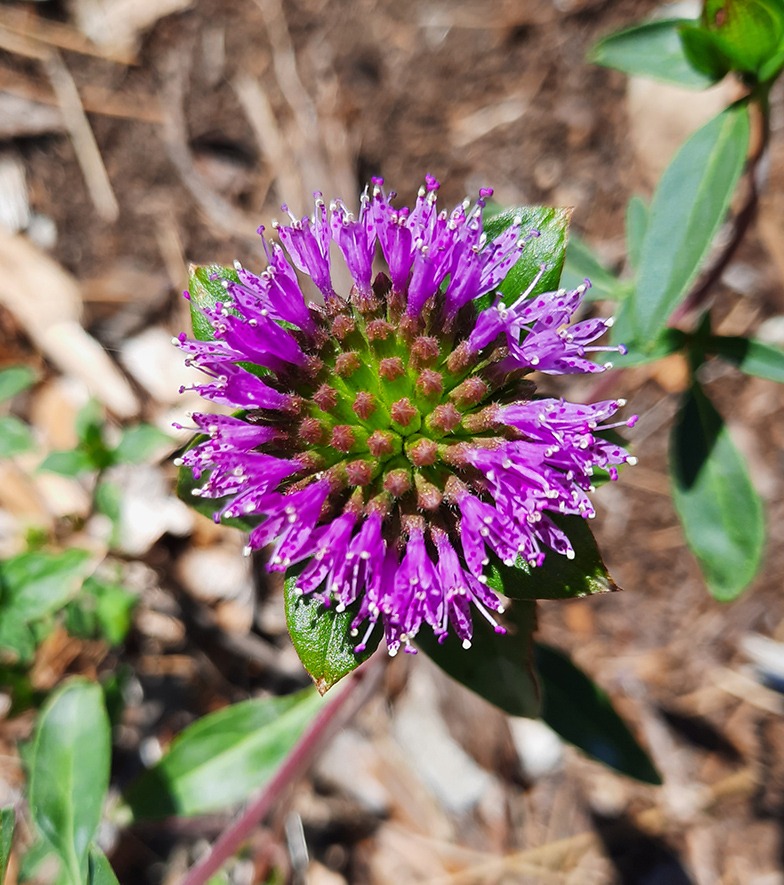
Monardella lanceolata blooming in a restored area in Yosemite Valley. Photo: NPS, July 2020.
One plant at a time adds up. Since 2016, more than 2,000 volunteers, including our work week crews and hundreds of students from NatureBridge and Conservancy-funded youth programs, have helped sow 16 acres of native flowers, treat more than 50 acres of invasive plants, and collect hundreds of thousands of seeds to grow in a local nursery.
The results are visible. Milkweed, lessingia, goldenrod and other native flowers blooming in restored areas are attracting a variety of pollinators, including bees, wasps and skippers — and monarchs.
During the 2019 season, five different volunteer groups had the opportunity to watch and cheer as monarchs fluttered through restoration sites. For Campbell, seeing the monarchs dance by offered hope, as did seeing the volunteers leave the project sites “a little more observant, a little more intrigued, and a little more inspired,” with a deeper appreciation for ecological intricacy and for the role people can play in protecting pollinators.
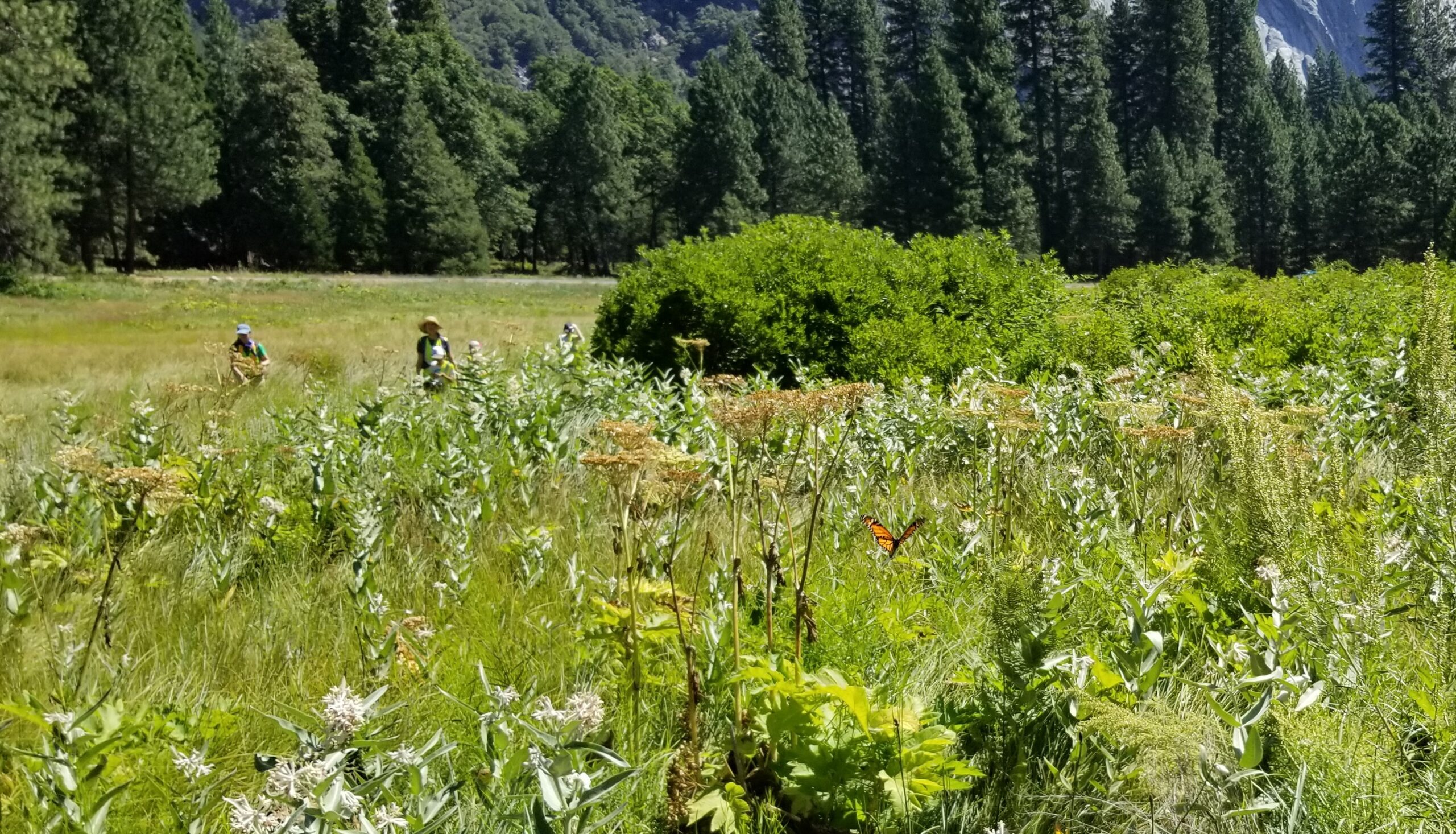
On an August day in 2019, a monarch butterfly winged across a restoration site in the Valley where volunteers from a middle school were gathering seeds and removing invasive plants. Photo: NPS, August 2019.
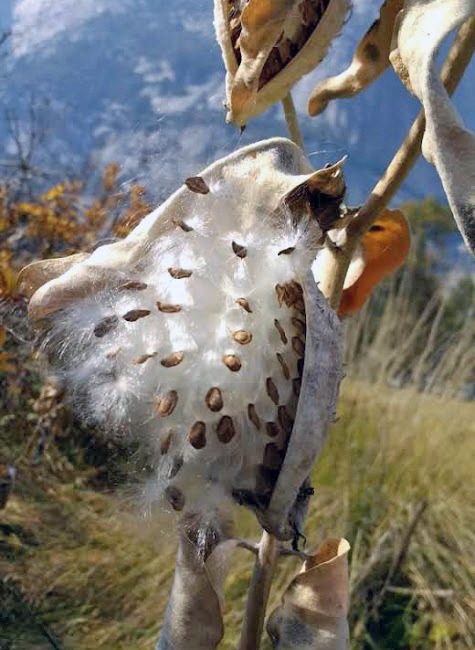
Milkweed seed peeks out of a pod in Yosemite Valley. Photo: NPS.
While volunteer numbers were drastically reduced in 2020, due to the COVID-19 pandemic, the restoration work went on. NPS and Calaveras Healthy Impact Product Solutions (CHIPS) crews, with help from 20 volunteers, watered, mulched and weeded to take care of native plants sown last fall, and collected seeds from more than 30 native species to use for future plantings. The CHIPS and NPS crews are heading back into the meadows this month, where they’ll be planting from a store of 5,000 healthy plants that have been growing at a partner nursery.
There are fewer monarchs in the park than in years past, but seeing the regal orange insects gives Campbell hope. This work is helping ensure monarchs can safely rest, eat and lay eggs in the Valley, which could mean more butterflies born in Yosemite, adding to the overall population. Each monarch, and each milkweed, can make a difference.
As one student intern wrote in 2016, as he reflected on carefully teasing milkweed seeds from their fluffy pods: “In every seed, there is hope.”
Hope for monarchs and other pollinators, and for the ecosystems they help anchor, dwells in each seed collected, in each flower planted and in every inch of meadow restored. Walk through the Valley on some future summer day, and you might just see that hope taking shape, in pink milkweed petals, in a striped caterpillar or in orange butterflies winging west.
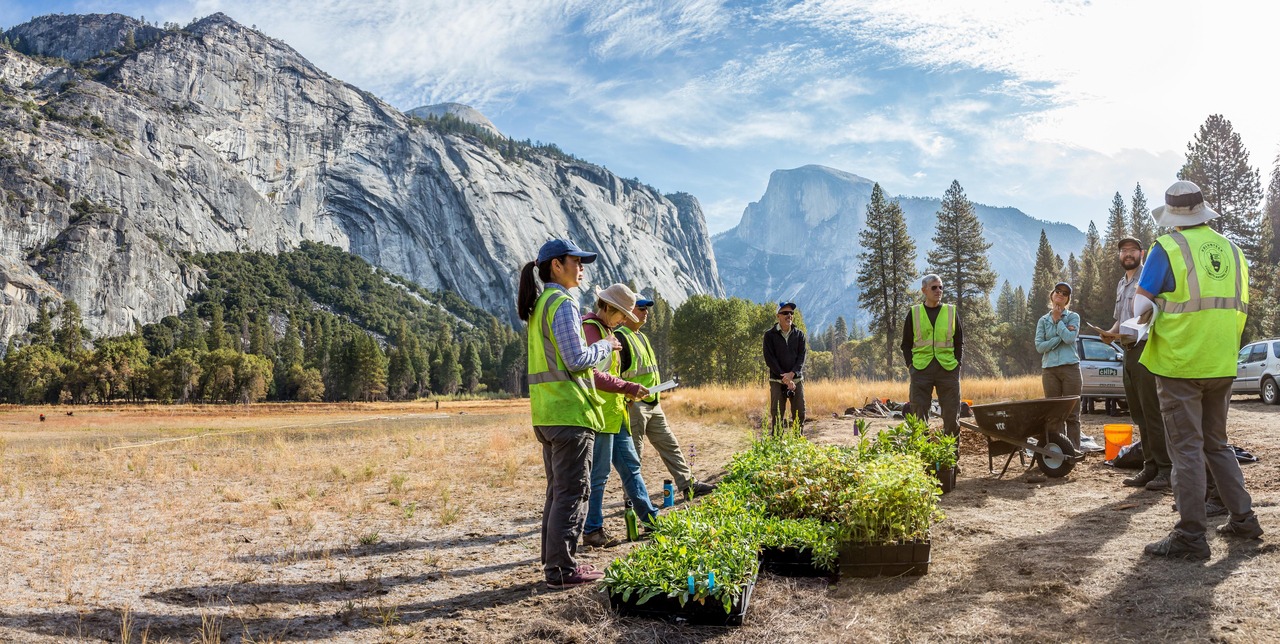
A group of Yosemite Conservancy volunteers joined park botanist David Campbell to plant pollinator-friendly vegetation in Yosemite Valley in October 2019. Photo: Terri Tipping.
Learn More: Monarchs and Milkweed
Learn more about the relationship between monarchs and milkweed — and why planting for pollinators is so important — in this episode of “Yosemite Nature Notes”:
Do Your Part for Pollinators
- Plant pollinator-friendly flowers where you live. Research which native plants are best for butterflies, bees and other pollinators in your area. (Organizations such as the Xerces Society and Pollinator Partnership can help you figure out what to plant!)
- Protect existing pollinator habitat by minimizing your impact on meadows, coastal groves and other ecosystems.
- Spread the word! Talk to your friends and family about pollinators — and look for opportunities to participate (safely) in butterfly counts or to share your pollinator observations, such as on iNaturalist. If you’re especially keen to learn about and help butterfly populations, check out citizen science projects such as the Western Monarch Milkweed Mapper, the Xerces Society’s Western Monarch Thanksgiving and New Year’s counts, the North American Butterfly Association counts, Monarch Watch, the Monarch Larva Monitoring Project, and the Yosemite National Park butterfly count.

